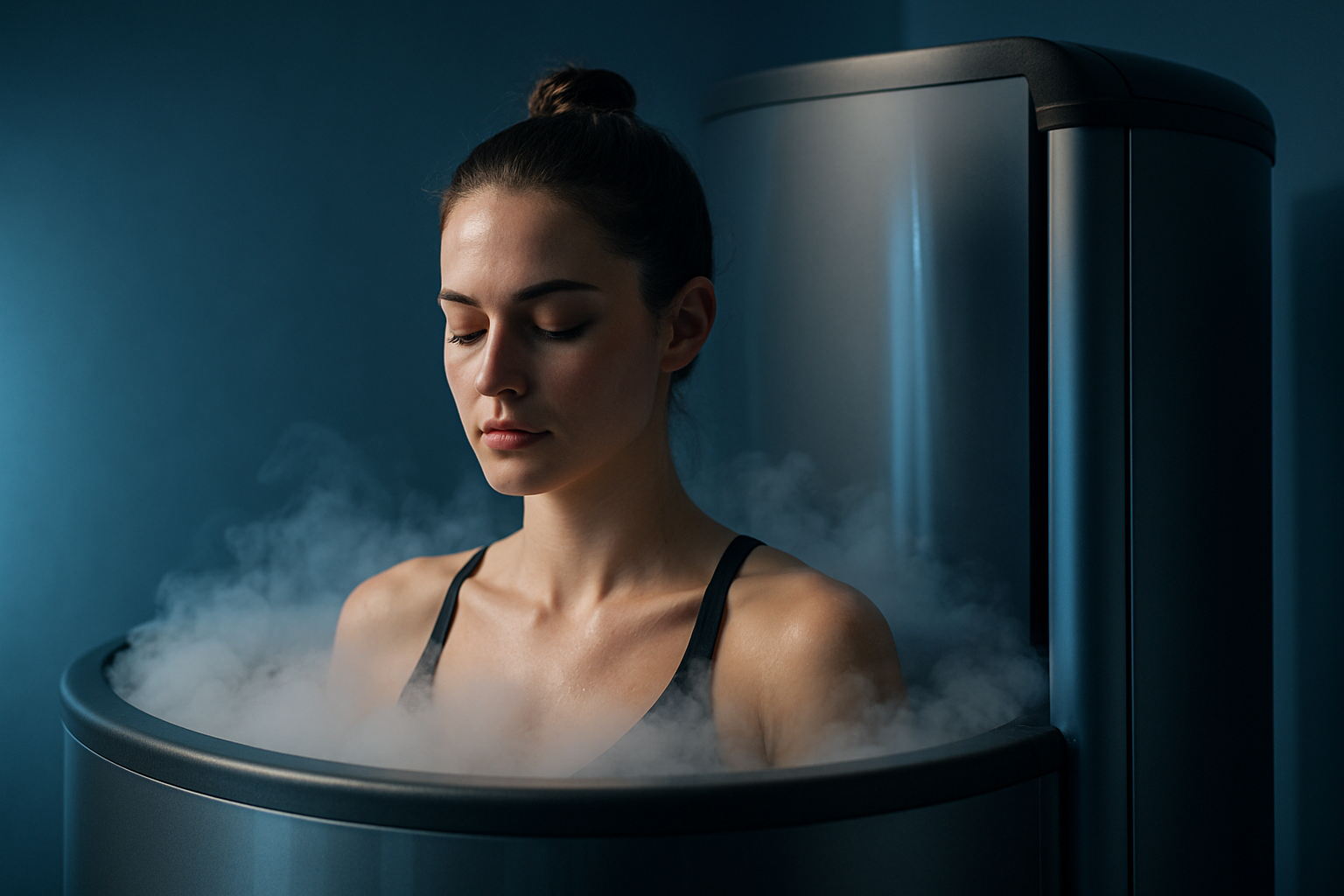Cryotherapy: The Cool Revolution in Wellness
In a world constantly seeking innovative ways to enhance health and beauty, cryotherapy has emerged as a groundbreaking treatment that's capturing the attention of wellness enthusiasts and athletes alike. This cutting-edge technique, which involves exposing the body to extremely cold temperatures for short periods, promises a myriad of benefits ranging from reduced inflammation to improved skin complexion. As more people discover the potential of this icy therapy, it's quickly becoming a hot topic in the realms of fitness, recovery, and aesthetic enhancement. But what exactly is cryotherapy, and how has it managed to send shivers through the wellness industry? Let's dive into the frosty world of this cool revolution and explore why so many are embracing the big chill in their pursuit of peak performance and radiant health.

The most common form of cryotherapy involves standing in a cryochamber for two to four minutes while liquid nitrogen-cooled air circulates at temperatures as low as -200°F (-128°C). This extreme cold causes the body to enter a brief state of thermal shock, triggering a range of physiological responses that proponents claim can lead to numerous health benefits.
The Science Behind the Freeze
When exposed to extreme cold, the body’s survival mechanisms kick in, redirecting blood flow from the extremities to vital organs. This process, known as vasoconstriction, is followed by rapid vasodilation once the body begins to warm up. This quick cycling between constriction and dilation is believed to flush toxins from the bloodstream and tissues, reduce inflammation, and boost circulation.
Research on the effects of cryotherapy is ongoing, but several studies have shown promising results. A 2016 study published in the Archives of Physical Medicine and Rehabilitation found that cryotherapy can significantly reduce muscle soreness and inflammation after intense exercise. Another study in the Journal of Clinical Medicine in 2019 suggested that cryotherapy may improve sleep quality and reduce symptoms of anxiety and depression.
From Athletes to Aesthetics: Diverse Applications
Initially popularized among elite athletes for its potential to speed up recovery and reduce injury downtime, cryotherapy has since found its way into various sectors of the wellness industry. Professional sports teams and Olympic training facilities have integrated cryotherapy chambers into their recovery protocols, with many athletes swearing by its ability to enhance performance and reduce fatigue.
In the beauty world, cryotherapy facials have gained traction as a non-invasive alternative to traditional skin treatments. These facials use controlled cold temperatures to tighten pores, increase blood flow to the face, and stimulate collagen production. Celebrities and skincare enthusiasts alike have embraced this frosty facial treatment for its purported anti-aging and skin-brightening effects.
The Cool Factor: Why Cryotherapy is Trending
The rise of cryotherapy can be attributed to several factors. First, there’s the appeal of a quick fix – a typical session lasts only a few minutes but claims to offer benefits that would take hours to achieve through traditional methods. This efficiency appeals to the fast-paced lifestyle of many wellness seekers.
Secondly, the novelty factor plays a significant role. In an industry saturated with countless treatments and products, cryotherapy stands out as a unique and somewhat extreme experience. This distinctiveness has made it a popular topic on social media, with influencers and celebrities sharing their icy adventures and further fueling public interest.
Lastly, the holistic nature of cryotherapy’s purported benefits – from physical recovery to mental well-being and aesthetic improvements – aligns well with the growing trend towards integrated wellness approaches that address multiple aspects of health simultaneously.
Chilling Concerns: Safety and Efficacy Debates
Despite its growing popularity, cryotherapy is not without its critics and concerns. The FDA has not cleared or approved whole-body cryotherapy devices as safe and effective for medical treatment. Some experts argue that the long-term effects of repeated exposure to extreme cold are not yet fully understood.
Safety is a primary concern, as improper use of cryotherapy equipment can lead to frostbite, burns, and even asphyxiation due to nitrogen gas exposure. In 2015, a cryotherapy-related death in Nevada raised serious questions about the regulation and safety protocols in cryotherapy facilities.
Moreover, while anecdotal evidence abounds, scientific research on cryotherapy’s efficacy for many of its claimed benefits remains limited. Critics argue that more rigorous, long-term studies are needed to substantiate the treatment’s effectiveness and safety.
The Future of Freeze: What’s Next for Cryotherapy
As research continues and technology advances, the future of cryotherapy looks promising but uncertain. Some experts predict that more targeted cryotherapy treatments will emerge, focusing on specific body parts or health concerns. Others anticipate the integration of cryotherapy with other wellness technologies, such as biofeedback systems that can personalize the treatment based on individual physiological responses.
The regulatory landscape is also likely to evolve. As cryotherapy becomes more mainstream, increased scrutiny from health authorities may lead to stricter guidelines and standardization of practices, potentially improving safety and efficacy.
In conclusion, cryotherapy represents a fascinating intersection of ancient cold therapy practices and modern technology. Its rapid rise in popularity reflects a broader trend in the wellness industry towards innovative, efficient treatments that promise holistic benefits. While questions about its long-term effects and efficacy remain, cryotherapy has undoubtedly made a lasting impact on the wellness landscape. As research progresses and the technology continues to evolve, this cool revolution may yet prove to be more than just a passing chill in the ever-changing world of health and beauty.





